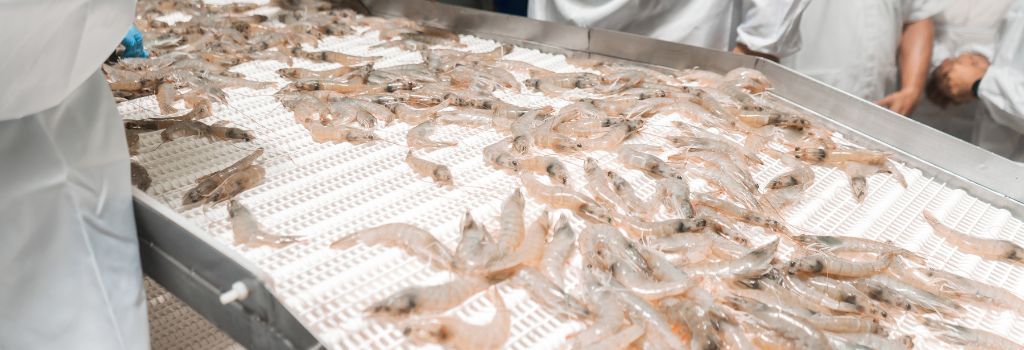
Did you know that prawns travel thousands of kilometres and several continents before they reach your plate? Learn about the consequences of the long journey they make.
Have you ever wondered what happens beyond your plate? The food you eat may have travelled many kilometres and passed through many hands before being eaten.
An established global industrial production system stores and transports food from anywhere in the world on any day of the year.
The large gap between production and consumption hides numerous social and environmental consequences. On the one hand, it entails a great deal of energy expenditure and the construction of many infrastructures. On the other hand, it makes us live disconnected from the seasonal rhythms of local agriculture. This system causes a loss of food sovereignty and fosters unfair relations within the food chain so that only the most economically powerful companies in the sector benefit.
If you want to learn more about the journey food takes from the moment of its harvest until it reaches your plate, read this article.
As explained in the report Alimentos Kilométricos (in Spanish), the foods that travel the most kilometres from abroad to Spain are animal feed, fish, crustaceans, molluscs, coffee, tea, cocoa and pulses, among others.
Prawns, one of the staples of Christmas meals, are on this list of products that travel the world before reaching your plate. You probably buy prawns from the supermarket near your home, but do you know where they come from or which countries they have travelled through before arriving here?
THE PRAWN’S JOURNEY
Although Catalonia is a prawn fishing area with the famous Palamós prawn, much of the prawn consumed in Catalonia and Spain come from other countries such as Thailand, Indonesia, Mexico, Ecuador, Honduras or Vietnam, where they are grown in mangrove areas.
From these countries, the prawns are shipped to China to be peeled and frozen. Subsequently, they travel to European countries, such as England or the Netherlands, where they are battered. It is from these points that they are then distributed to the rest of Europe, including Spain.
The long globalised journey of prawns has negative consequences for the environment, such as the high CO₂ impact of transporting them around the world.
Massive prawn farming is also leading to the destruction of ecosystems and the deforestation of mangrove forests in producer countries, increasing vulnerability to hurricanes and climate change.
For example, in Thailand, the prawn trade is destroying mangroves and polluting estuaries and depleting local freshwater supplies, as this Greenpeace report (in Spanish) explains.
Looking ahead, the global trade in Southeast Asian prawns is expected to triple in the coming years. Now, will its negative impact on the planet also triple?
In order to stop prawn travelling and reduce its environmental footprint, we must prioritise purchasing local food. And you may be wondering, “Where can I find prawns in Catalonia?” The most famous prawns are from Palamós, Vilanova and Sant Carles de la Ràpita, as well as red prawns and white prawns from various Spanish ports.
Did you find this article interesting? Did you know about the thousands of kilometres prawns travel to reach the Catalan pans?
Come to visit the Menja, Actua, Impacta [Eat, Act, Impact] exhibition and learn more about local an proximity food!

